POWER OF THE PACK
Meet the hounds trained to track down rhino poachers in Kruger Park
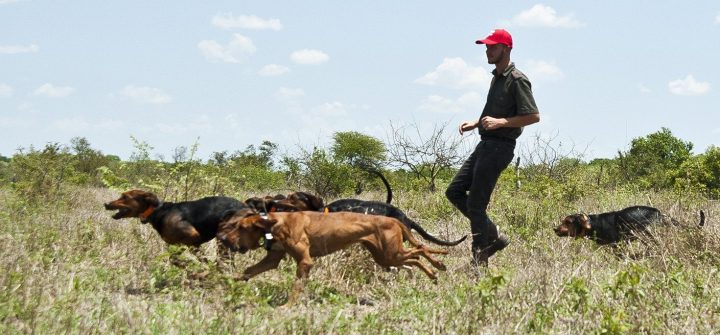
There can be nothing more terrifying for a poacher than to hear an off-leash pack of baying hounds bearing down on him.
Rhino poachers entering Kruger National Park are increasingly being run down by packs of unleashed hunting hounds in full cry, followed by a chopper tracking their hi-tech GPS collars.
As the baying pack approaches, the poacher has no idea the dogs are trained to not attack. They won’t bite him (there are legal implications), but if he tries to harm the dogs, rangers will fire from the chopper. The poachers know this and no dog has yet been lost to a poacher’s bullet.
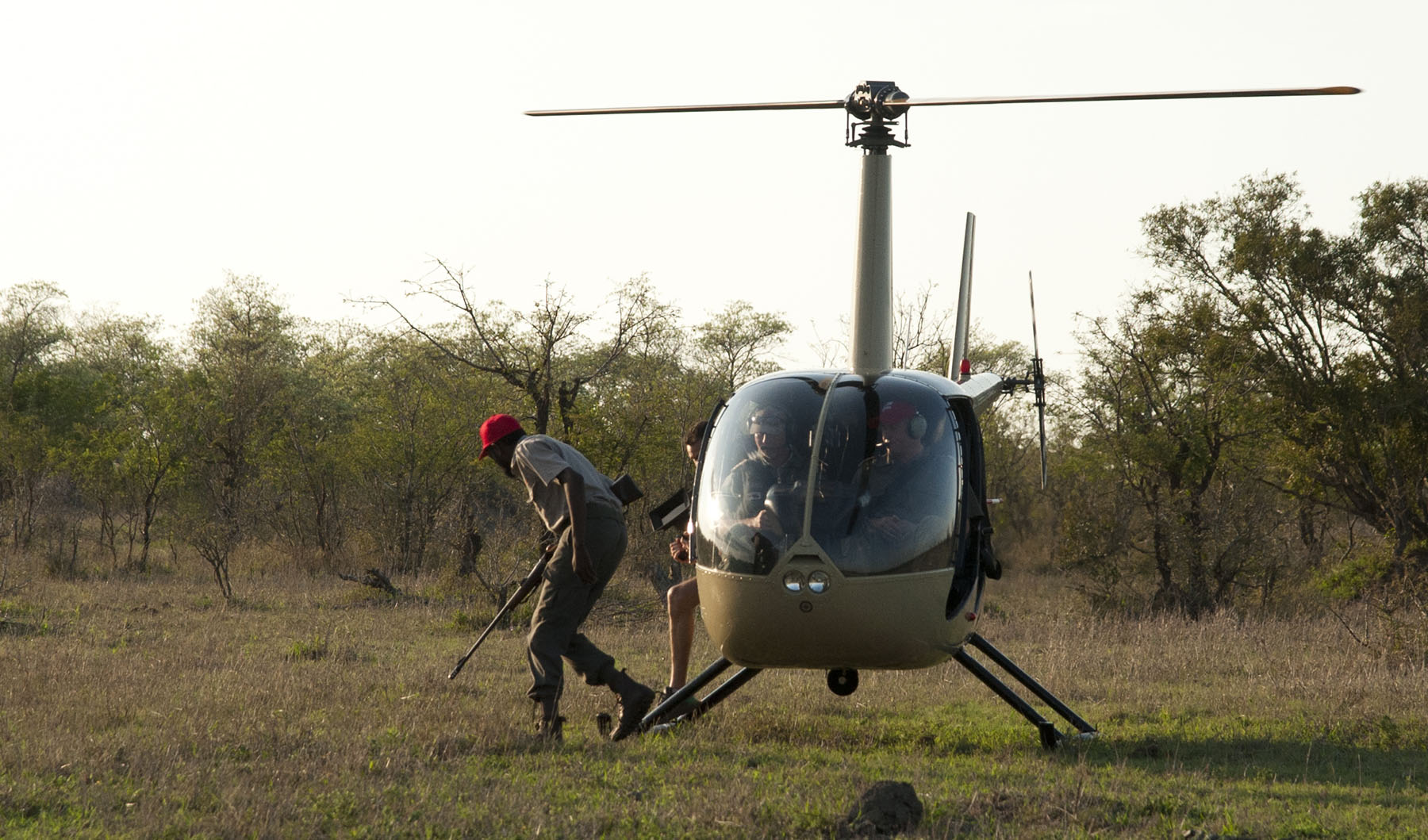
When the dogs surround a poacher the rangers move in for an arrest. (Photo: Don Pinnock)
When they find a poacher, they array themselves around him and wait as the chopper zones in on their position. Once surrounded by dogs, poachers know the game is up.
This marriage of an ancient hunting practice and modern technology is being honed, tested and mobilised at the K9 Unit based at the Southern African Wildlife College near Kruger’s Orpen Gate. It’s the first in Africa to run operational anti-poaching pack hounds in a game park and is clocking up successes.

The pack in a bakkie, baying to go. (Photo: Don Pinnock)
Since it became operational in early 2019, it has been called out 181 times by Kruger Park and logged 109 successes, with 193 arrests and 88 weapons confiscated.
It also operates in private areas of the Greater Kruger area and has trained both dogs and handlers in Tanzania, Zimbabwe, Eswatini and handlers for Uganda and Zambia.
Formidable combination
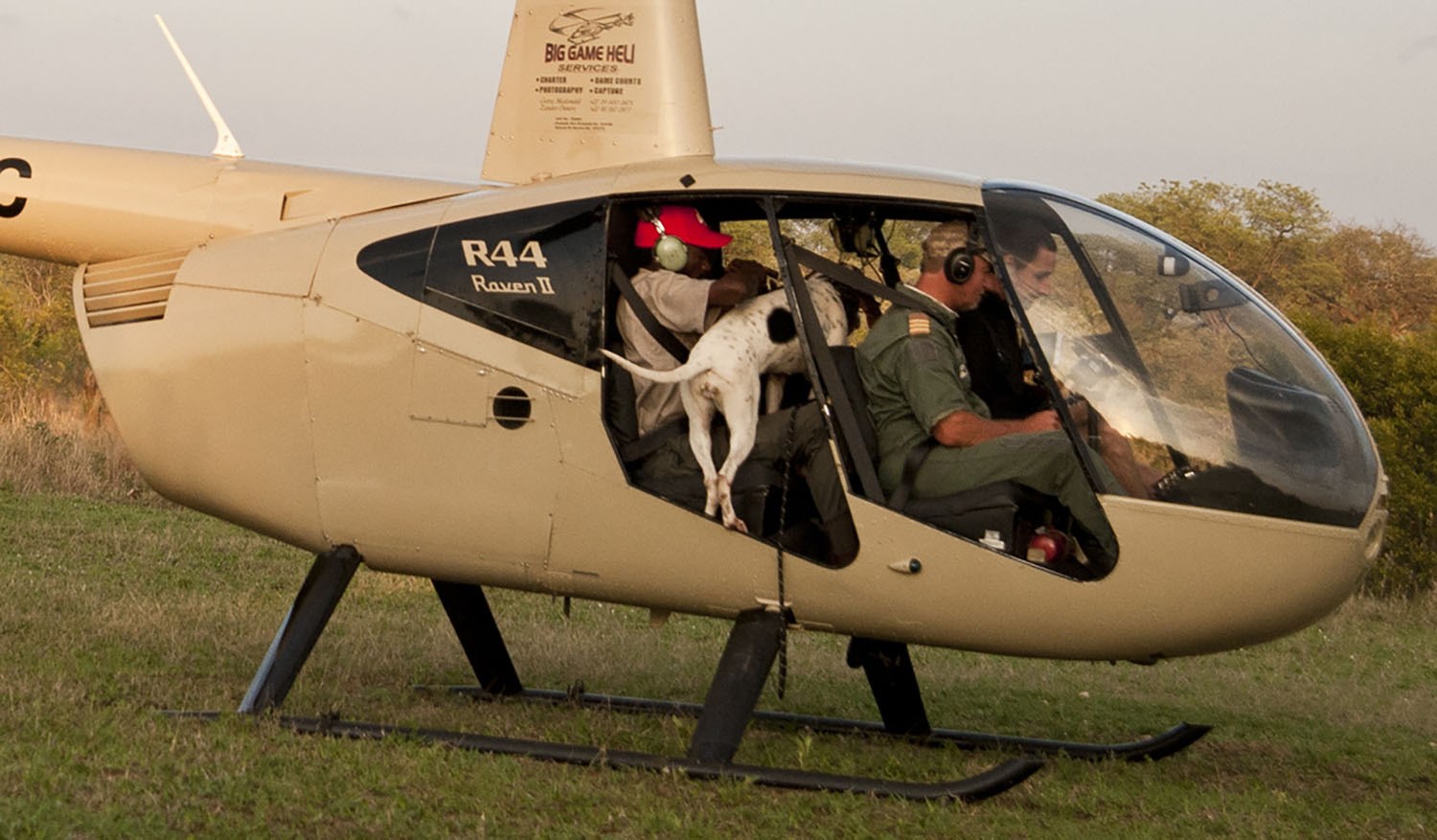
A search helicopter taking on canine passengers. (Photo: Don Pinnock)
“A tracker dog linked to modern technology is a formidable combination,” says dog master Johan van Straaten, as we watch dogs piling on to a chopper while their handlers duck under its whirling blades.
“They all have their chosen place in the chopper and they sleep during the flight. Very chilled. But when it banks and starts going down, they all wake up and start baying. You can’t hear yourself think.
“Leaving a dog bored is cruelty,” he adds, “they love to work. When they hear the chopper, they start going crazy with excitement.”
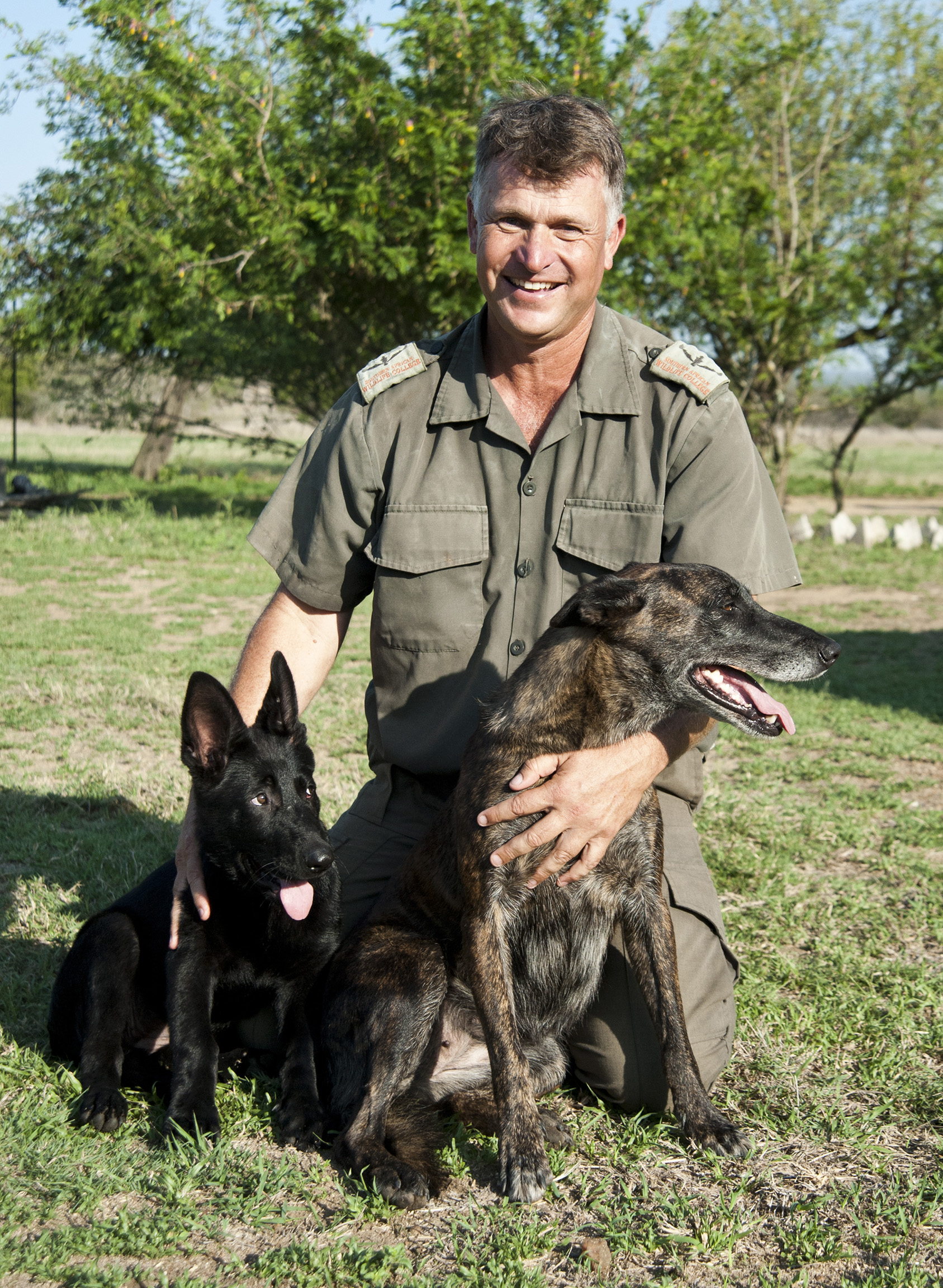
Dog master Johan van Straaten with his Dutch Shepherd Lola and puppy-in-training Bree. (Photo: Don Pinnock)
Kruger Park, the world’s greatest refuge for rhinos, is losing them to poaching faster than they’re being born.
Since 2009 — just 13 years — rhino numbers in Kruger have dropped from 11,420 to 2,458 and this year they will continue to drop some more. During that time, the number of rhinos poached was double the existing population.
On any night, but especially when the moon is full, there are teams of poachers prowling the park, each with a high-powered rifle and machete. The job of the dogs is to track them down. At this task, they’re proving formidable.
Biotech wonder
Using dogs to supplement satellite tracking collars, navigation screens and helicopters might seem a low-tech approach, but in fact the opposite is true. Nothing humans can make equals the biotech wonder of a dog’s nose.
Humans shed up to a million cornflake-shaped skin cells every minute. There are around 50,000 in every litre of air we inhale when humans are around, and perhaps 500 settle in every metre we walk. They are very personal bits of data and dogs can follow their crumb-trail, able to detect dilutions of one or two parts per trillion. That’s like sensing a drop in an Olympic-size swimming pool.
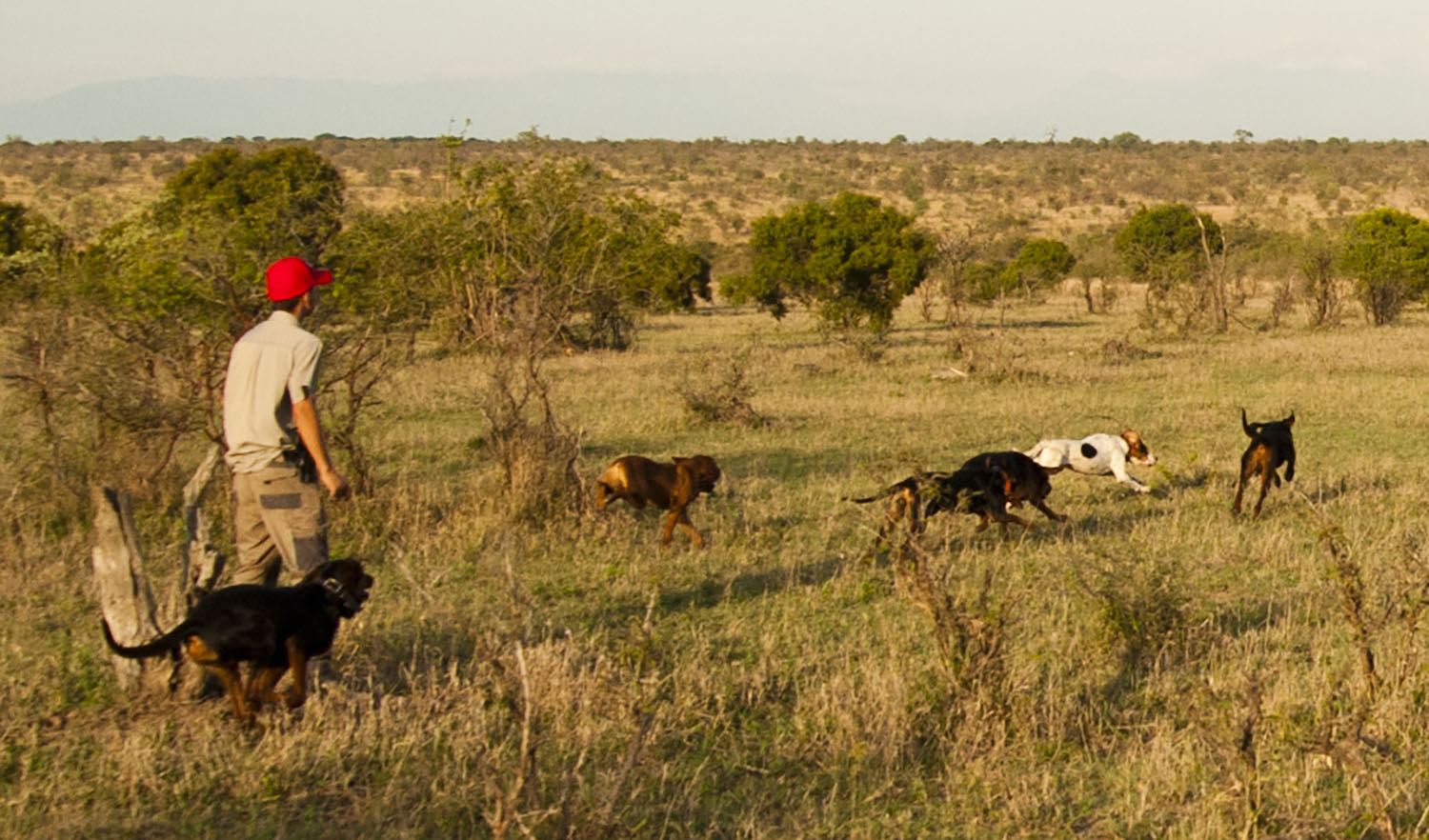
The hounds get going on a scent. (Photo: Don Pinnock)
Their sniff equipment has taken millions of years to perfect. Unlike ours, their nostrils are comma-shaped, with a flap of skin called the altar fold. When they inhale, it opens, but on exhalation, it closes, forcing air out of the tail of the comma, diverting it sideways so as not to contaminate the next in-breath. That’s like a set of nasal binoculars that never loses focus.
In their nose cavity are millions of olfactory neurons. Writing in Being a Dog, Alexandra Horowitz notes that “if their olfactory epithelium were spread out along the other surface of the dog’s body, it would completely cover it”, whereas in humans it “might cover a mole on our left shoulder”.
Each of our in-breaths goes straight to our lungs. But in dogs, there’s a bony plate that diverts some of the air into a sniff recess where it can be carefully assessed. It’s a scent capture device so precise it’s been likened to our colour perception.
Avoidance tactics
“Poachers try all sorts of things like walking backwards, making scuff marks that look like zebras, spreading pepper around, wearing 10 pairs of socks over their shoes,” says Van Straaten.
“It’s a problem for handlers who must detect the track to put the dogs on to it. In those situations, we just have to trust our dogs to find the track.
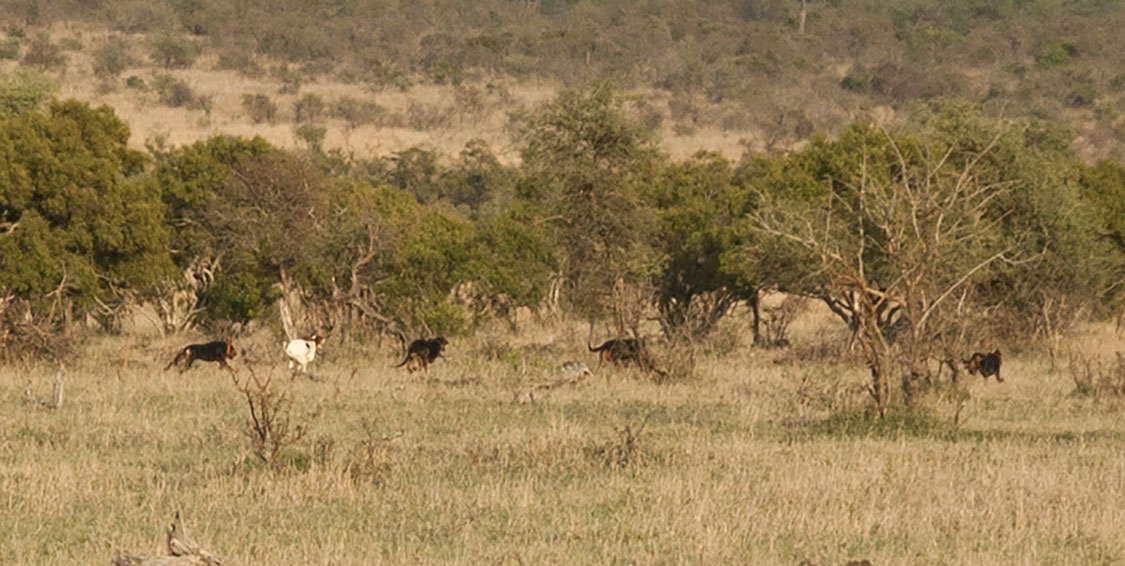
The hounds get going on a scent. (Photo: Don Pinnock)
“Once the dogs lock on, they’re not just following ground tracks. There’s scent on the bushes and on the grass. They can’t fool the dog by hiding their scent. A line (single leash) dog can lose the track, but with a pack it’s different. If they lose the trail, they scatter and search until one finds it.”
The first thing poachers do when they hear the dogs coming is to hide in the bush. The dogs will circle them and a few will come out to watch for the chopper. A second type of response is to try to run away. But they can’t escape the dogs.
Another tactic is to leopard-crawl through the long grass. But that creates a lot of scent because they’re very scared and sweating. Sometimes they split up — bombshell — and that’s a problem for the dogs about who to follow. Some get away this way, but never all.
“They plan and we plan. It’s ongoing tactical planning,” says Van Straaten.
“Poachers are adapting, and unfortunately there are bad apples in the ranger corps who help them.”
Visit Daily Maverick’s home page for more news, analysis and investigations
The first free-running pack dogs — redbones and black-and-tans — arrived from Texas in 2018. The unit now has around 35 dogs — 10 operational, 10 in training and the rest are puppies and old-timers. In addition to the pack dogs, the unit trains line-tracking dogs who work on a leash with a handler, and gate dogs to sniff out firearms and illegal substances.
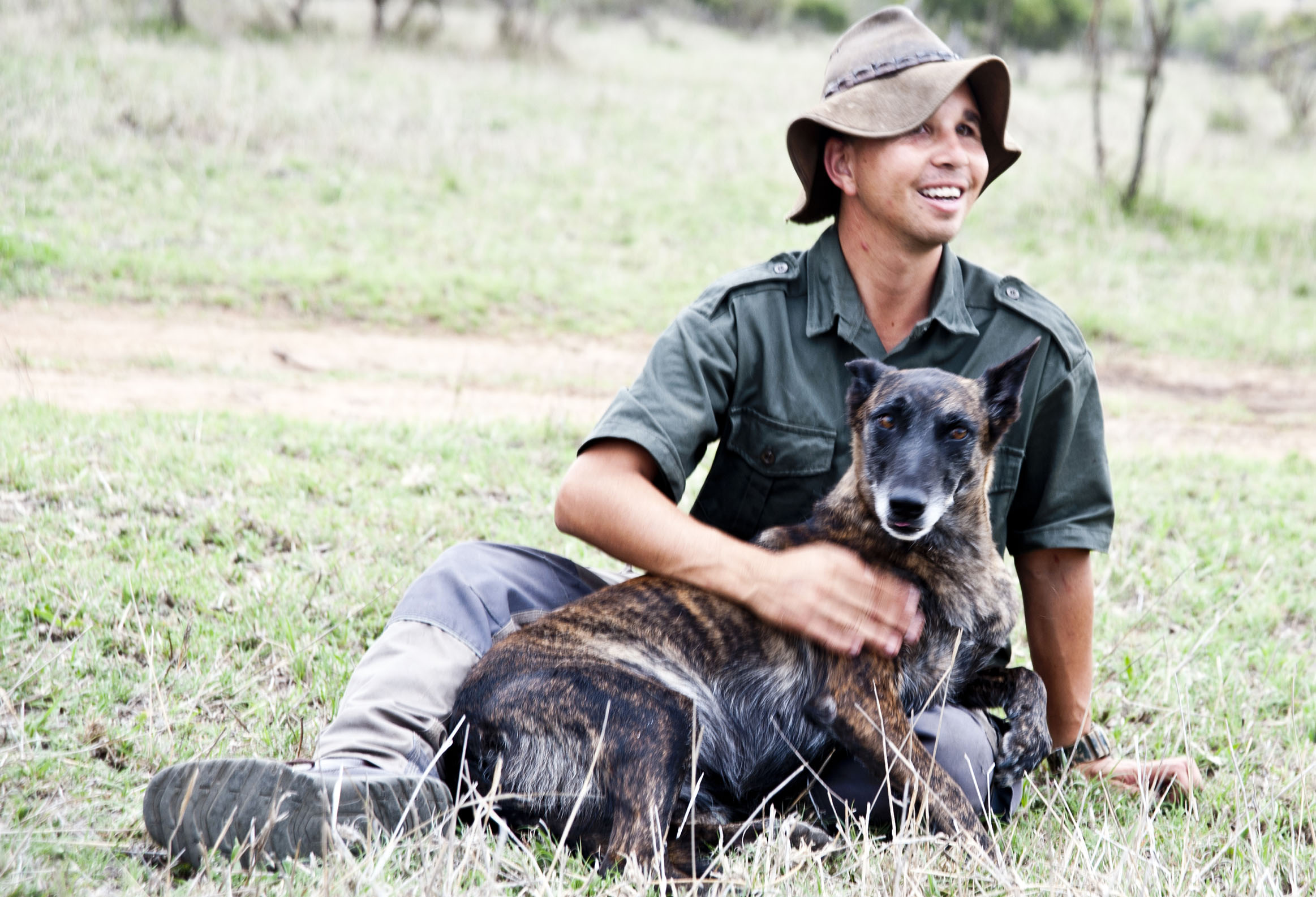
Dog trainer Jason Bertschy with dog master Johan van Straaten’s Dutch Shepherd Lola. (Photo: Don Pinnock)
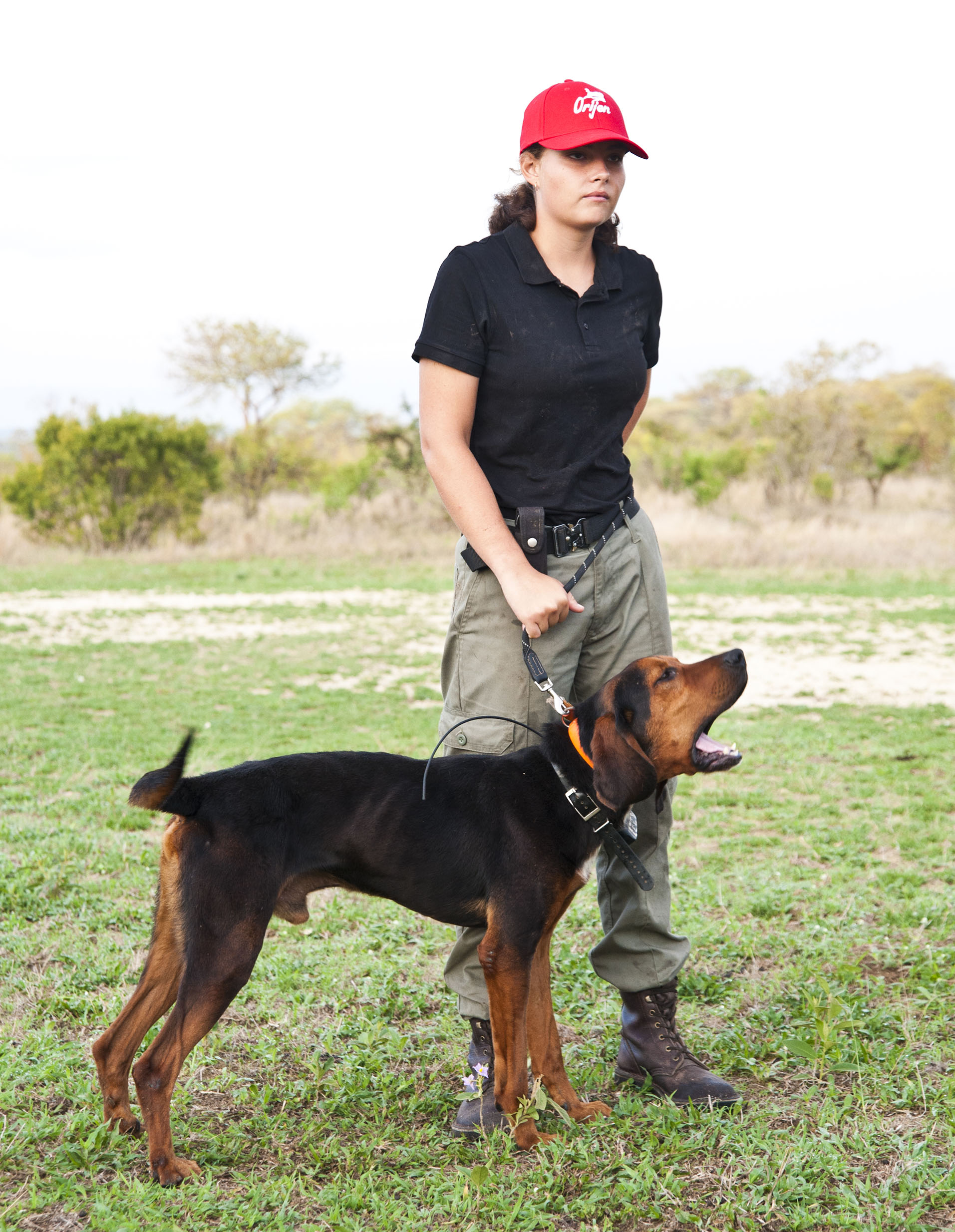
Dog handler Kirah Blake. (Photo: Don Pinnock)
Training starts at sunrise with about six dogs to an operational pack. Handlers lay a track by having someone walk a route, then put the dogs on it. Some tracking sessions last four hours, some are overnight, building confidence.
“The dogs are trained to watch the chopper,” says Van Straaten. “When it drops to land, they come to it. If they lose the track but we can see the line from the GPS, we can drop and pull them to where it’s likely to be and they find it again.
“The job of the chopper is to scout out for trouble — a wildebeest with young will attack the dogs, or maybe a leopard or hyena,” says Van Straaten.
“We can push the animals off with the chopper if we have to. Also, the dogs have been taught to come to the chopper. So that way we can pull dogs away from danger.
“When they get thirsty, they’ll leave the track and have a drink and swim to cool down. But after about a minute, they pick up the track again and they’re off.
‘We’re dog facilitators’
“Dogs are so intelligent. We’re not dog trainers, we’re dog facilitators to help them do what they do naturally. They figure out stuff themselves and we just build them up. Of course, handlers are also trained. They need to learn to see tracks, know their direction and age. And, of course, they have to love dogs.”
The older dogs who can no longer keep up are not discarded — they become the teachers of both puppies and handlers: they know what to do.
“This way,” says Van Straaten, “they have a purpose in life.”

The pack in action on the trail of a poacher. (Photo: Don Pinnock)
The K9 dogs are not breed-specific but are generally long-eared hunting hounds: fox hounds, blue ticks, Texas black-and-tans and redbones. If they’re not good enough to be a pack dog, they’re trained as on-leash trackers.
“You can train a good dog to track within two weeks,” says Van Straaten, “but you have to start with good genetics… a dog that has the stamina and intelligence to track for 20km without anyone telling it what to do.
“It’s about the quality of the care. They need to be stimulated. You must engage with them. These pack dogs are athletes; they have huge stamina and they eat well. They’re all fed through a donation by Pack Leader who produces Orijen dog food.”
Pack ambassador
Johan van Straaten is not only dog master and head trainer, but equally comfortable talking to both people and dogs — an ambassador for the pack. His constant shadow is a Dutch shepherd named Lola.
He started training dogs while at school in Middleburg, Eastern Cape, working on intuition and reading everything he could get his hands on about canine training. Seven years ago, the K9 Unit at the Wildlife College offered him a job. He says it was a dream come true.
Lola climbs on to his lap as we chat and they gaze at each other for a moment. He scratches her behind an ear and captures the whole K9 Unit in three words: “Dogs are amazing!”
The unit’s start-up funding was from the WWF Nedbank Green Trust, the Ivan Carter Wildlife Conservation Alliance and Friends of African Wildlife. DM/OBP











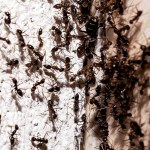









 Become an Insider
Become an Insider
Well done! Although the scent could lead all the way to MPs!
What a great idea but a pity it wasn’t used long ago before so many thousands of rhino’s died
Inspires hope!
Well done, an amazing job long may it last.
What an inspiration- thanks for such an uplifting article
Positive news with progress! Well done to all involved, thanks for sharing the info Don.